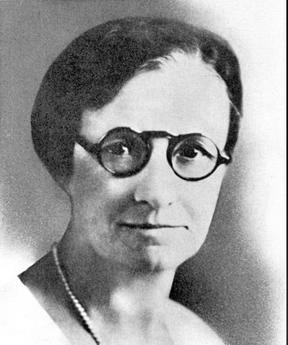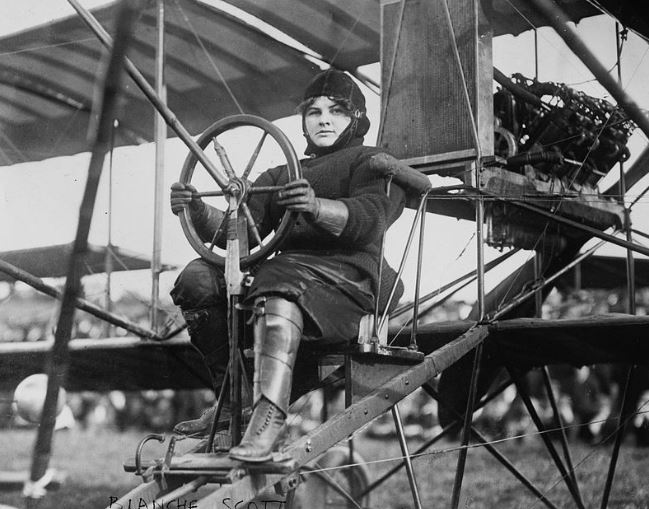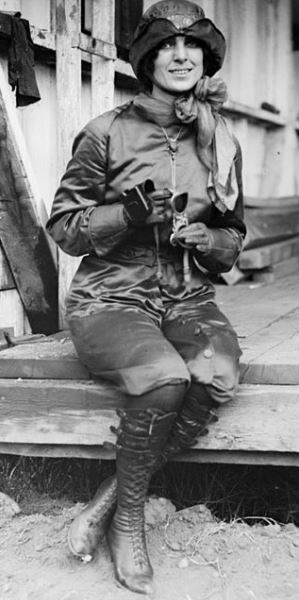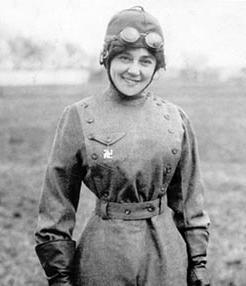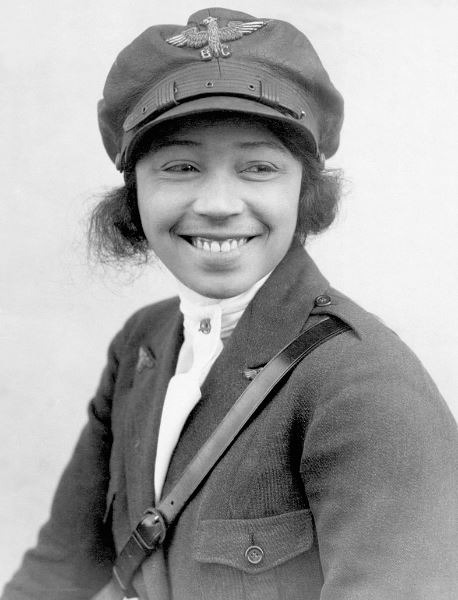This timeline of women in aviation highlights many of the firsts and accomplishments of women in aviation as pilots and other roles. Not only pilot men in World War I and pilot men in World War II are famous. Also, aside from Amelia Earhart, In this list, women have also paved the way in aviation. Some women have played crucial support roles. Others have made a name for themselves as parachutists and in other flight-related pursuits.
1. Bessica Raiche
Bessica Raiche was one of the first female pilots to fly. On September 16, 1910, Bessica Raiche made the first accredited solo flight by a woman in the United States. Because she drove a car and wore bloomers, Raiche was considered a “new” woman of the twentieth century. She was a talented musician, painter, and linguist who also engaged in traditionally “masculine” activities like swimming and shooting. Raiche became fascinated by Baroness Raymonde de Laroche’s flying while studying music in Paris.
She and her husband, Francois, settled in Mineola, New York, and built their first plane—a Wright type—in their living room. She took her first solo flight in this frail bamboo and silk craft. The Aeronautical Society honored her as America’s first female aviator with a dinner and a gold medal in October 1910.
The Raiches built the French-American Aeroplane Company out of their home-based silk, wire, and bamboo aircraft industry. Raiche eventually gave up flying due to health concerns and began a demanding career as a doctor of medicine. She was one of the first women to practice obstetrics and gynecology in the United States.
2. Blanche Stuart Scott
Blance Stuard Scott was a fearless woman who accomplished incredible feats on land and in the air. Blanche Stuart Scott was the first American woman to fly solo, though her flight was not recognized as official. Scott, who was always up for a challenge, was the first woman to drive a car from coast to coast in 1910. She saw a Wright plane in flight as she passed through Dayton, Ohio, and she got her first airplane ride when she arrived in California.
Scott’s car trip drew the attention of Curtiss exhibition team member Jerome Fanciulli, who asked if she wanted to learn to fly. Despite not sharing Fanciulli’s enthusiasm for teaching Scott to fly, Glenn Curtiss agreed to teach her. Curtiss was the first and only woman to receive training from him. Curtiss placed a block of wood behind the throttle pedal to prevent her plane from gaining enough speed to take off while taxiing alone. On September 2, however, “something happened,” and Scott was able to fly to a height of 40 feet (12 meters). She continued her training and made her Curtiss team debut at a Chicago air show during the first two weeks of October in 1910.
Scott performed inverted flights and “Death Dives” from 4,000 feet for several exhibition teams (1,219 meters). She gave up flying in 1916 because she was bothered by the public’s interest in crashes and the lack of opportunities for women to work as engineers or mechanics. She became a special consultant to the Air Force Museum at Wright Patterson AFB in Dayton, Ohio, in the 1950s after a career in radio and film writing.
3. Harriet Quimby
Harriet Quimby was the first woman in the United States to obtain a pilot’s license. Despite her brief career, Harriet Quimby is one of the most well-known female aviators. Quimby was the first female pilot in the United States and the first woman to fly solo across the English Channel.
Quimby grew up in Michigan before moving to California with her family. She began writing for Leslie’s Weekly in New York City in 1903 after working as a writer for the Dramatic Review in San Francisco in 1902. She was inspired by John Moisant’s aerial performance at the 1910 Belmont Park Aviation Meet and asked him to teach her to fly. Quimby received her Federation Aeronautique Internationale certificate on August 1, 1911, and joined the Moisant International Aviators, an exhibition team, right away. She went to Mexico with the Moisant group and was the first woman to fly over the city.
In March 1912, Quimby purchased a Bleriot 50 monoplane in France and began planning an English Channel flight. Gustav Hamel, unsure of a woman’s ability to make such a trip, offered to disguise himself as Quimby and accompany her on cheval. On April 16, 1912, she refused and flew from Dover, England, to Hardelot, France (about 25 miles south of Calais). She became an overnight sensation and triumphantly returned to the United States. Quimby was flying in the Bleriot with William Willard at the Harvard-Boston Aviation Meet on July 1, 1912. Willard was thrown from his seat when the plane suddenly pitched forward; the plane then flipped over, throwing Harriet out as well. Quimby and Willard were both killed in the Dorchester Harbor.
4. Matilde Moisant
Matilde Moisant was one of America’s first female pilots. Matilde Moisant was the second woman to be granted a pilot’s license in the United States. Moisant learned to fly with aviator Harriet Quimby at her brother Albert’s Moisant Aviation School on Long Island, and received her license on August 13, 1911. The two pilots and friends formed the Moisant International Aviators together. In September, Moisant made her exhibition debut at the Nassau Boulevard Aviation Meet. She won the Rodman Wanamaker altitude trophy in November after flying her 50-hp Moisant monoplane to an incredible altitude of 4,000 feet (1,219.2 meters). She defeated both Quimby and Helene Dutrieu, a French pilot. Until the early spring of 1912, Moisant competed in meets across the United States and Mexico, often flying at higher altitudes than most male pilots. Moisant then scheduled her final flight for April 14, 1912, in Wichita Falls, Texas, to honor the wishes of her family, who were still reeling from the death of her brother John in a plane crash in 1910. Her aircraft burst into flames upon landing due to a fuel tank leak, and it was almost her final performance of any kind. Moisant was rescued from the wreckage with her clothes on fire, but her heavy wool flying costume protected her from serious injury.
5. Bessie Coleman
Bessie Coleman had a brief but groundbreaking career as a pilot, and her ambition was to open her flight school to all students who were interested. On June 15, 1921, Bessie Coleman became the first African American woman to obtain a pilot’s license. Coleman moved to France to obtain her pilot’s license because it was impossible for a Black woman in the United States in the 1920s. Coleman returned to Chicago after earning her license and took a job as a barnstorming pilot, performing stunts at aviation shows. Coleman would only perform in exhibition shows if the crowds were desegregated during an era of intense racial prejudice and Jim Crow laws. Coleman and her mechanic took a practice flight before an upcoming performance on April 30, 1926. As the plane accelerated, it went into a nosedive, tailspin, and flipped over, the flight quickly turned tragic. Coleman and her mechanic were both killed in the attack.
